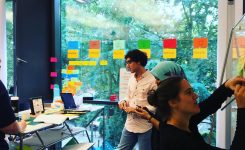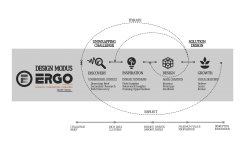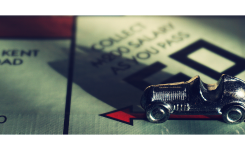Business Design, Design Thinking, Innovation Design
DESIGN: FROM THE DRAFTING TABLE TO THE BOARDROOM
To many, design is often seen as a cost, a visual accessory that adds beauty to a product after it is engineered, a graphical output, or something that creative bohemians in marketing do between their breaks. But, in today’s business world, design has moved from the drafting table to the boardroom. Design has become a mindset; a framework for innovation, driven by the desire to deeply understand user needs, map their behavior, and crack the motivations and deep emotions driving their actions or inactions.
DESIGN-DRIVEN COMPANIES
Design-led companies such as Apple, Coca-Cola, IBM, Nike and Procter & Gamble have outperformed the S&P 500 over the past 10 years by an extraordinary 219%, according to a 2014 assessment by the Design Management Institute. At the core of each of these successful design stories is a state of customer intimacy, a deep understanding of users’ or customers’ unarticulated needs. Because of the remarkable success of design-led companies, design has evolved beyond aesthetics, and moved from the drafting table to the boardroom. More and more organizations nowadays want to learn how to think like designers to solve their most complex problems and drive innovation.
DESIGN VS. MARKET RESEARCH
Design research techniques can go much deeper than historical data and market research, which are only capable of scratching the surface. By designing human-centered empathy, observation and immersion research, we are able to identify not just what people do, but how and why they do it. Every action that people engage in has a deeper social or emotional meaning to them, even though they often lack the tools to articulate those connections. Equipped with empathy, ideation, experimentation and prototyping skills, designers embrace this ambiguity and navigate the unknown towards clarity.
DESIGN AS A MINDSET
We need to bring design much closer to the center of our planning and strategy development. Start applying design principles, not just to shape and form, but also to functionality, customer relations, customer experiences, business modeling and in-house operations. We must restore customer centricity, and think, how can we make people’s functional, social and/or emotional jobs easier? Wether an organization is looking to improve sales, strengthen customer loyalty, change user behavior, create a new product or service, open up new markets, or even create new venture, customer centricity minimizes the risk and uncertainty of innovation, and holds a secret recipe for success.
By placing the end user at the center of the design canvas, we combine right-brain creative thinking with left-brain analytical thinking to help craft and build insight-driven solutions to people’s most vital needs. By unearthing those emotional connections and deep insights, we can design products, services, policies and processes that connect with our end user on a humanistic level, deeper than just functionality, where the competition could be fierce.
To learn more about how ERGO can help you achieve customer-centricity and drive innovation, please get in touch and let us start the conversation.











